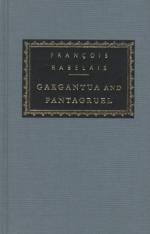The first pillar, I mean that which faced the temple gate, was of azure, sky-coloured sapphire.
The second, of hyacinth, a precious stone exactly of the colour of the flower into which Ajax’s choleric blood was transformed; the Greek letters A I being seen on it in many places.
The third, an anachite diamond, as bright and glittering as lightning.
The fourth, a masculine ruby balas (peach-coloured) amethystizing, its flame and lustre ending in violet or purple like an amethyst.
The fifth, an emerald, above five hundred and fifty times more precious than that of Serapis in the labyrinth of the Egyptians, and more verdant and shining than those that were fixed, instead of eyes, in the marble lion’s head near King Hermias’s tomb.
The sixth, of agate, more admirable and various in the distinctions of its veins, clouds, and colours than that which Pyrrhus, King of Epirus, so mightily esteemed.
The seventh, of syenites, transparent, of the colour of a beryl and the clear hue of Hymetian honey; and within it the moon was seen, such as we see it in the sky, silent, full, new, and in the wane.
These stones were assigned to the seven heavenly planets by the ancient Chaldaeans; and that the meanest capacities might be informed of this, just at the central perpendicular line, on the chapter of the first pillar, which was of sapphire, stood the image of Saturn in elutian (Motteux reads ‘Eliacim.’) lead, with his scythe in his hand, and at his feet a crane of gold, very artfully enamelled, according to the native hue of the saturnine bird.
On the second, which was of hyacinth, towards the left, Jupiter was seen in jovetian brass, and on his breast an eagle of gold enamelled to the life.
On the third was Phoebus of the purest gold, and a white cock in his right hand.
On the fourth was Mars in Corinthian brass, and a lion at his feet.
On the fifth was Venus in copper, the metal of which Aristonides made Athamas’s statue, that expressed in a blushing whiteness his confusion at the sight of his son Learchus, who died at his feet of a fall.
On the sixth was Mercury in hydrargyre. I would have said quicksilver, had it not been fixed, malleable, and unmovable. That nimble deity had a stork at his feet.
On the seventh was the Moon in silver, with a greyhound at her feet.
The size of these statues was somewhat more than a third part of the pillars on which they stood, and they were so admirably wrought according to mathematical proportion that Polycletus’s canon could hardly have stood in competition with them.
The bases of the pillars, the chapters, the architraves, zoophores, and cornices were Phrygian work of massive gold, purer and finer than any that is found in the rivers Leede near Montpellier, Ganges in India, Po in Italy, Hebrus in Thrace, Tagus in Spain, and Pactolus in Lydia.




